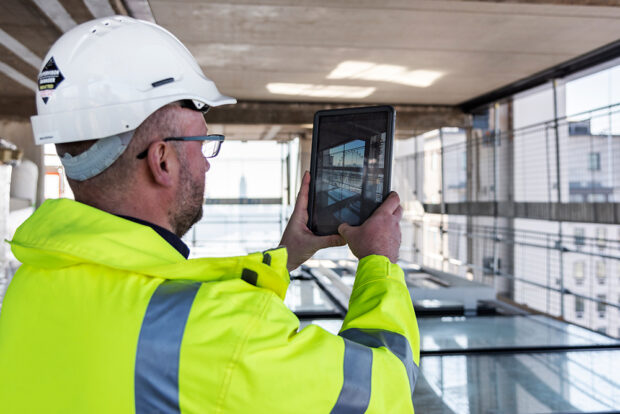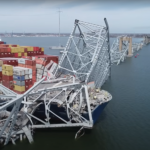Experienced field representatives have long been foundational to surveying commercial properties for insurance coverage, and they still are. A knowledgeable professional on-site can reliably collect the most important property details for underwriting and pricing. But they can’t visit every property, and that’s where technology plays an increasing and vital role.
Digital extensions of survey services have become more capable at a time when they’re most needed. Inflation and hard-market pressures have property/casualty insurers digging deeper for current, reliable, actionable data to help them maintain profitable underwriting. At the same time, they face demands to deliver better, faster quoting and improved customer experiences.

Insurers are finding answers by combining technology with field and insurance expertise to support clients better. Verisk’s new white paper, Human Insight, Digital Empowerment, explores these advances and the needs behind the innovations in greater depth.
Technological innovations give savvy field reps new tools for conducting surveys. Machine-learning models trained by deep insurance expertise analyze and verify data for more properties than inspectors could ever reach in person. Aerial imagery can put virtual eyes on remote locations, and video conferences with property owners can help fill data gaps.
Powerful as these new tools are, it takes strategy to build effective new digital workflows guided by best practices and experience.
Not just any data
Not all data is equally accurate and ready to use, and the differences matter when fast, profitable underwriting is the goal. If data needs vetting and cleansing to be useful, workflows can bog down. Actionable data should arrive with key attributes verified: ISO construction class, year built, number of stories, square footage, and primary building use. Better yet, it should include analytics to support benchmarking, risk scoring, and overall portfolio management.
Targeting resources
With reliable data sources secured, the next step is to optimize survey resources for effectiveness and efficiency, one risk at a time. What data points need discovery or verification, and what is already confirmed? It need not be guesswork: Historical analysis, rapidly expanding data sources, and advancements in analytics and machine learning have illuminated how commercial property attributes evolve. A 200-year-old structure won’t need its age verified again, but its use might change from a restaurant to a law office. Similarly, all commercial buildings have core attributes that are more and less permanent. Occupancy, which directly affects vulnerability to hazards such as fire, shows the most frequent change, according to Verisk’s research.
More tools, more flexibility
Digital survey technologies expand the toolbox for field reps to extract necessary underwriting data—not always with in-person site visits. The key is to match the survey methods with the specific commercial property based on its underlying hazards, occupancy, and presence or absence of sprinklers.
Site-verified data developed by seasoned experts remains foundational in building alternative digital tools. And it’s important to understand how best practices can help ensure the best results—and to know the different survey methods and their uses in a changing environment. Verisk can help.
Explore the new world of survey services and how Verisk is leveraging them to help insurers make more data-informed decisions.




















 Allstate’s Safe Driving App Helps Reduce Chance of Collision by 25%
Allstate’s Safe Driving App Helps Reduce Chance of Collision by 25%  Maritime Law Invoked By Ship Owner in Baltimore Bridge Collapse to Cover Salvage Costs
Maritime Law Invoked By Ship Owner in Baltimore Bridge Collapse to Cover Salvage Costs  Uncertainty Keeps Prices Up; No Prior-Year Loss Development: Travelers
Uncertainty Keeps Prices Up; No Prior-Year Loss Development: Travelers  FTC Issues Worker Non-Compete Ban as Chamber Lawsuit Looms
FTC Issues Worker Non-Compete Ban as Chamber Lawsuit Looms 